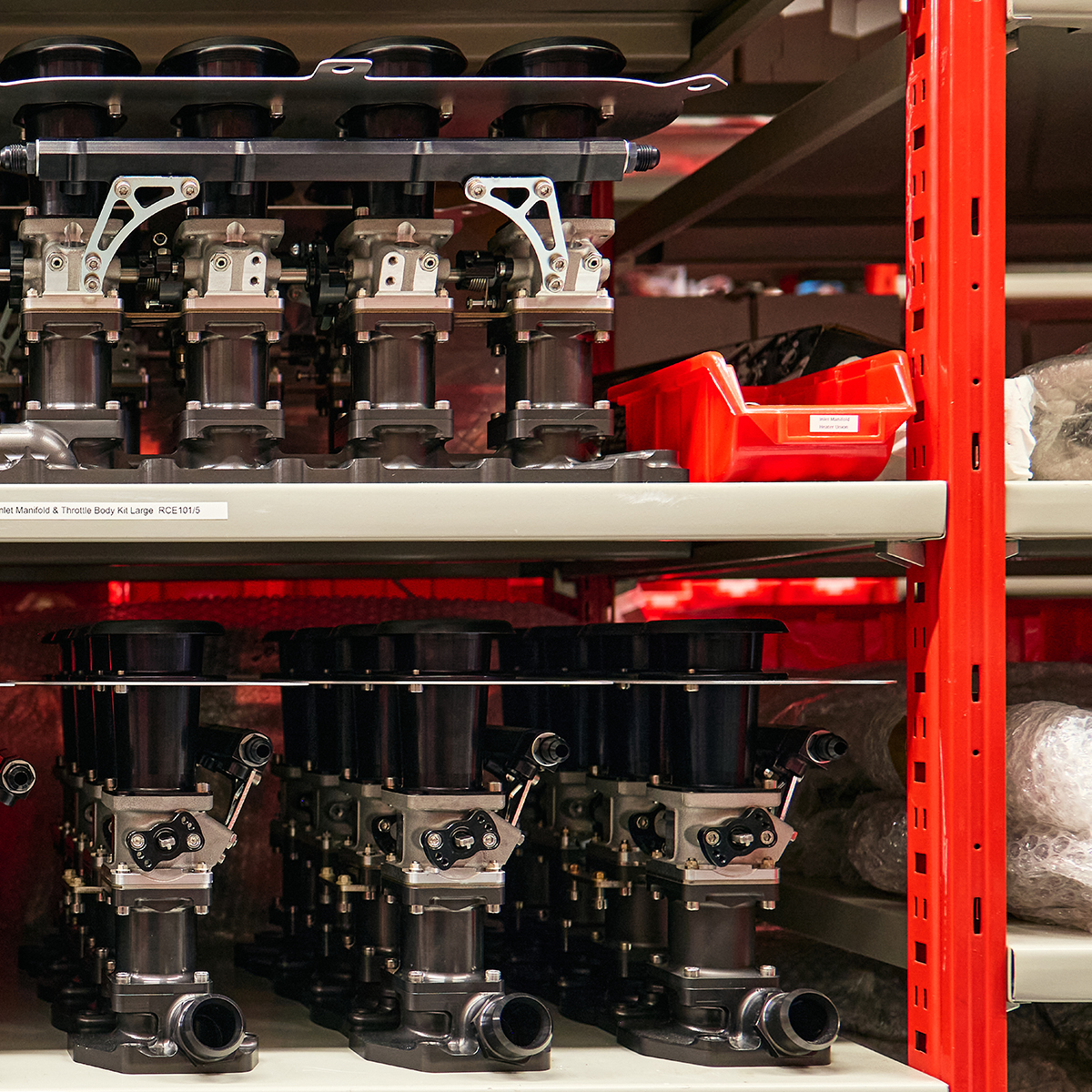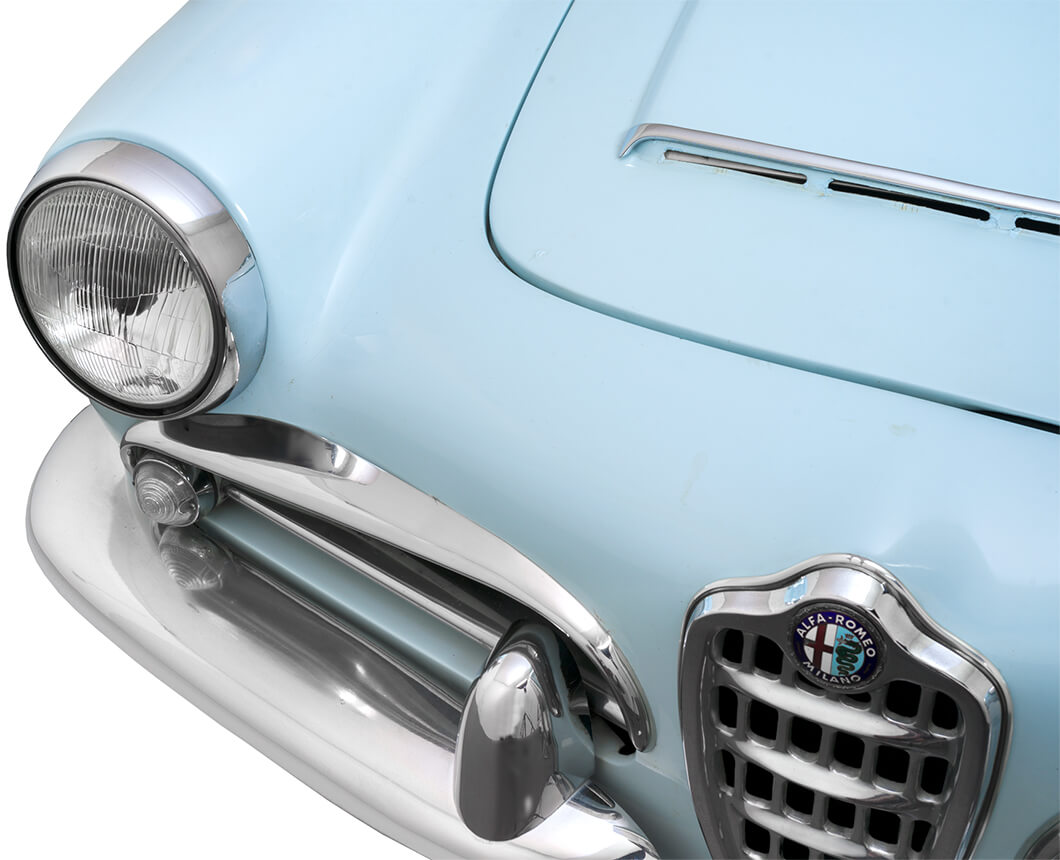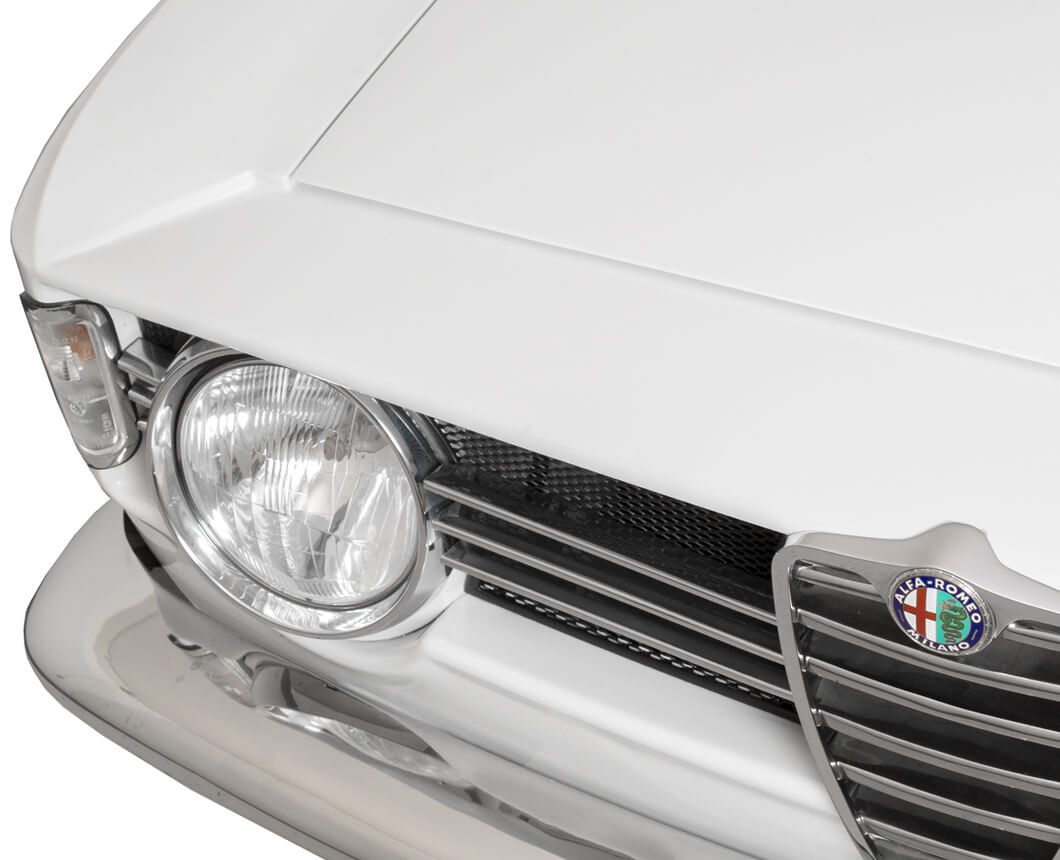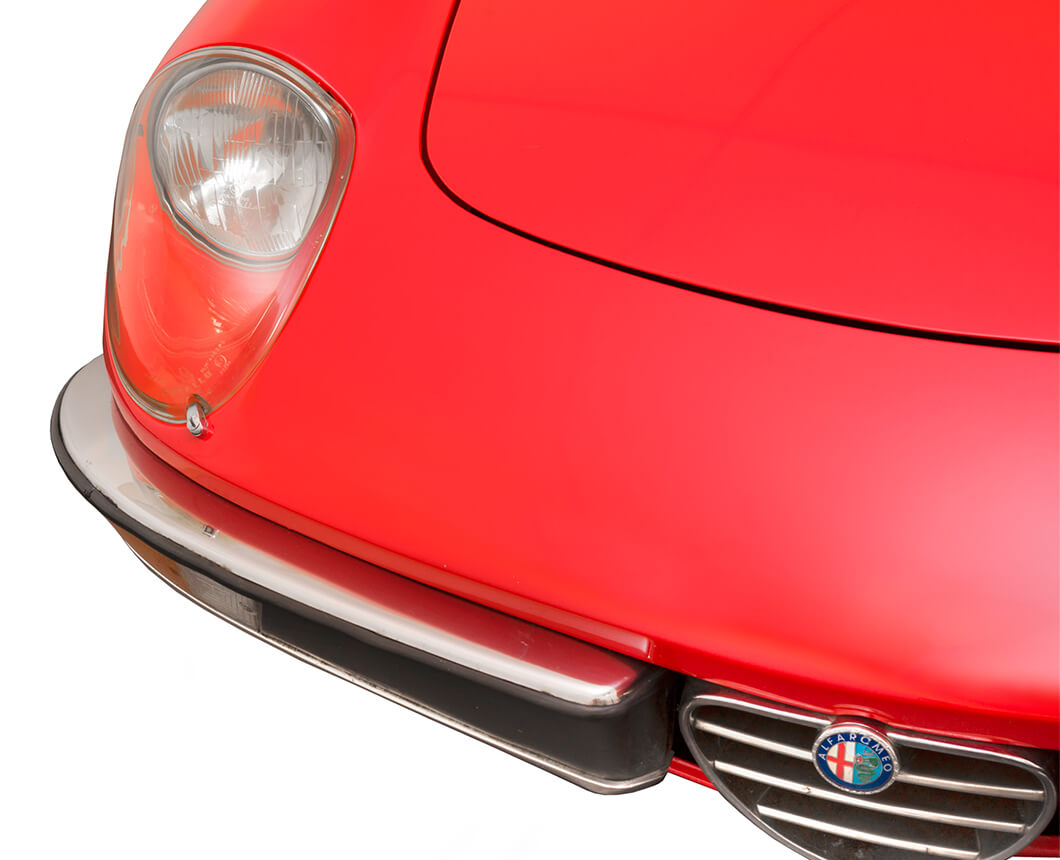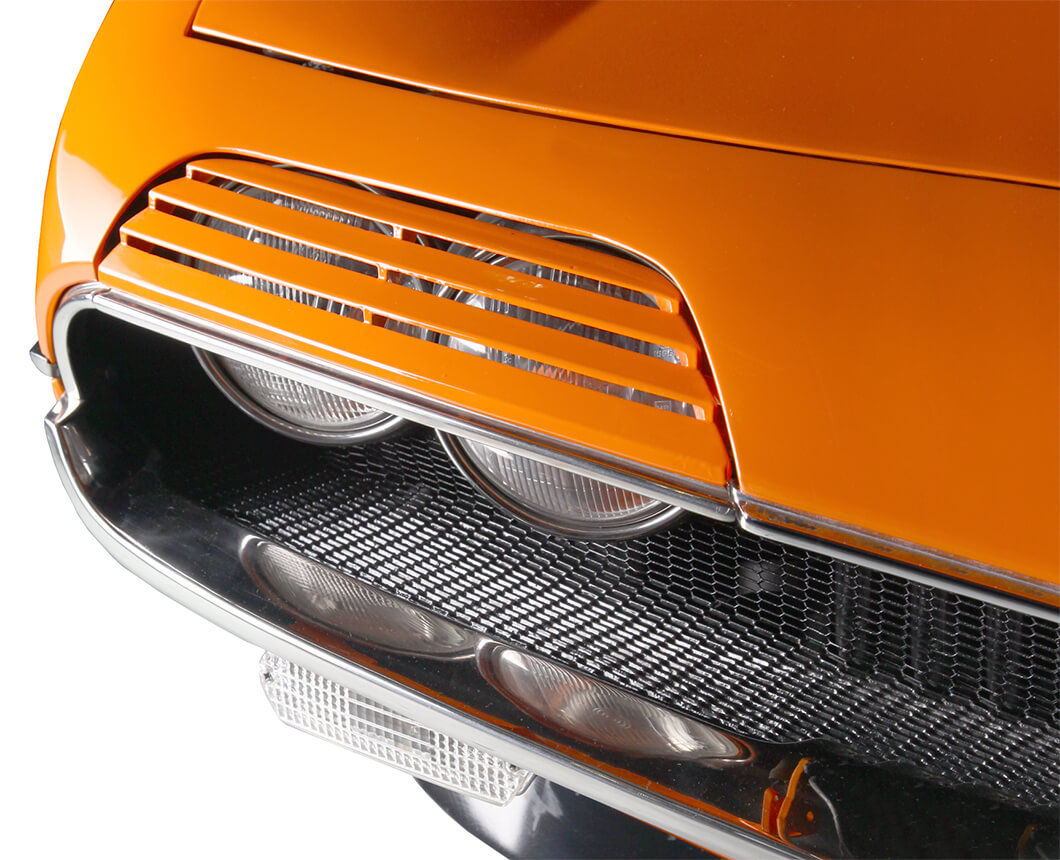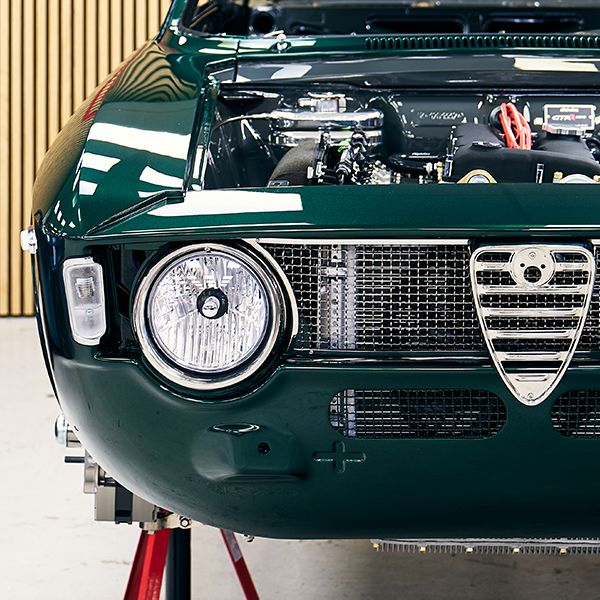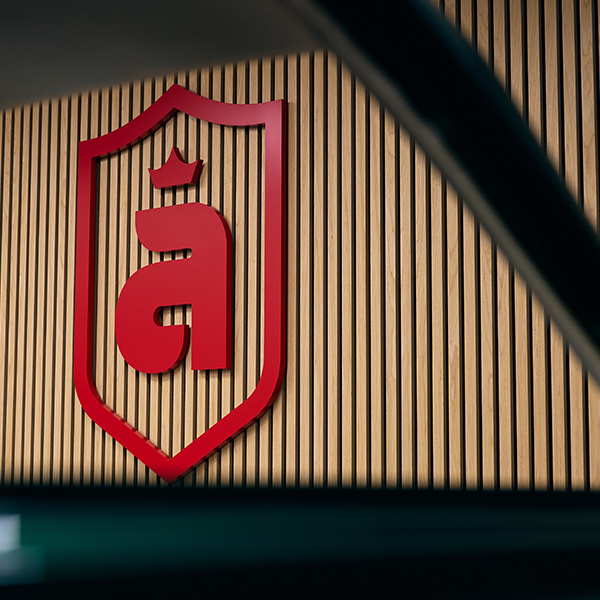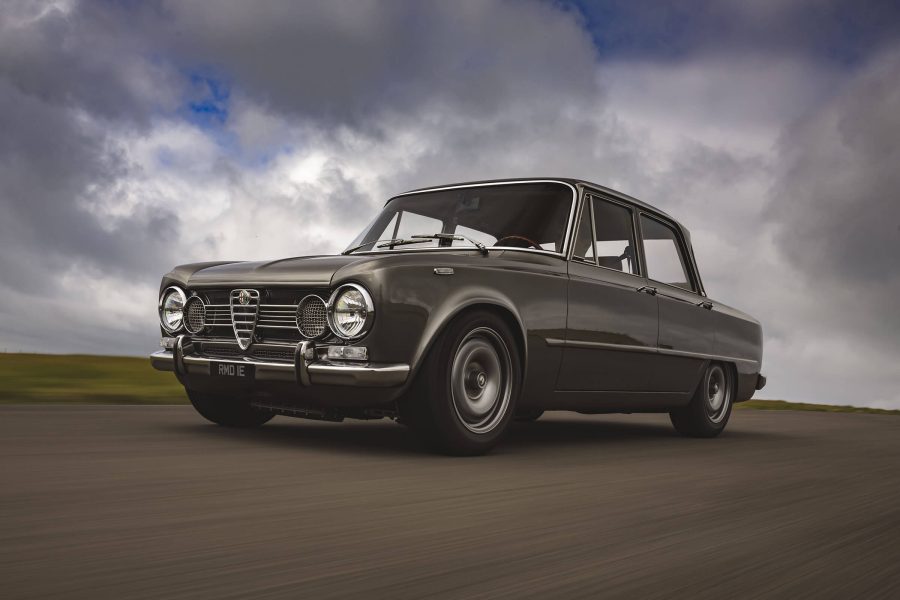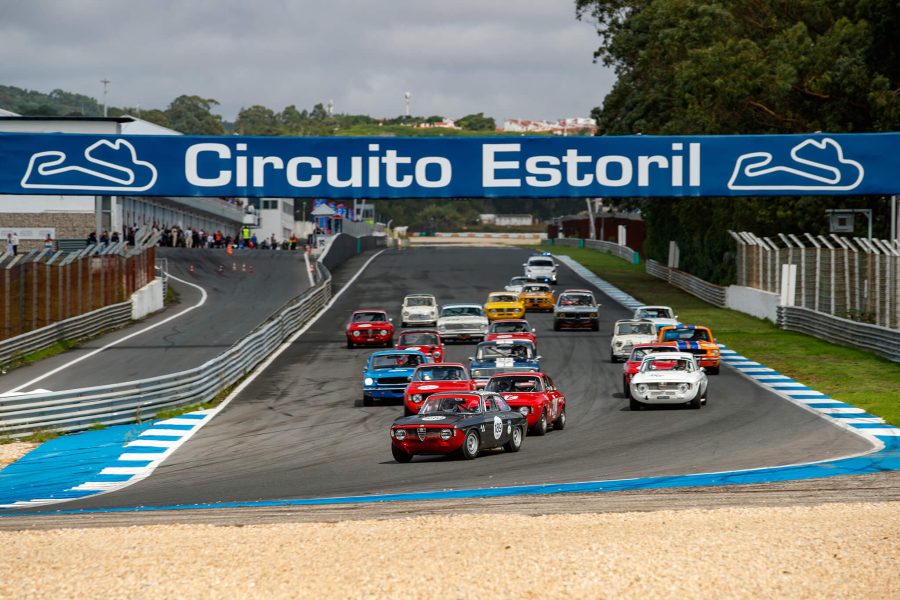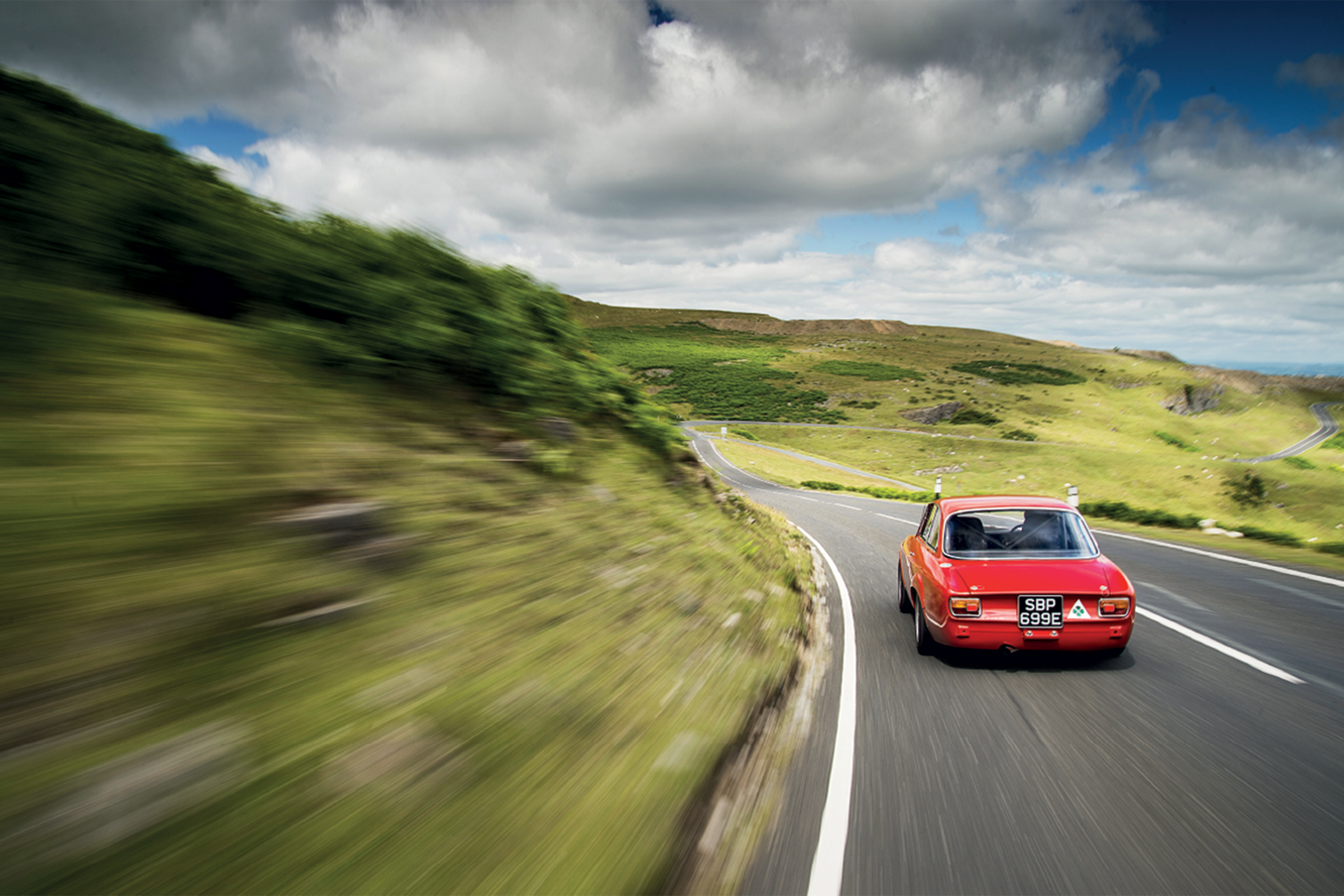
Money for Something
Can a 1960s Alfa GTA really justify a Ferrari-money price tag? When it’s an Alfaholics GTA-R 270, it can
EVO
Words: Henry Catchpole
Photography: Aston Parrott
Dashing down the narrow lanes that lead to the hairpin, the little Alfa feels absolutely at home. Like a red rat up a green drainpipe, it is scurrying between the tight banks and nipping through the corners. I reach for the long gearlever and find the smooth surface of its polished black top, feeling it buzz tinglingly in my left palm as the revs reach 7000rpm before I pull back smartly for fourth. a moment or two more on the throttle, then it’s onto the middle pedal, pressing hard with the ball of my foot, leaning on the unservoed brakes, canting my heel across to blip the throttle once, twice as we line up for the left- hand switchback.
Tucking the nose into the bend with the small steering wheel, the front hooks in sweetly towards the kerb, meaning the throttle can be applied early and with a bit of purpose. the front momentarily lightens past the apex, pushing wide of the line a fraction, but then the tail swings round as the road opens out and the steering seems to begin correcting the car almost of its own accord. this isn’t a snappy stab of oversteer but a decent drift. throttle wide open, diff locked, the car is almost walking itself wide on the exit of the bend as it slides up the road. there’s time to enjoy it and the huge smile on my face and the feeling in my stomach says I really am.
While you have almost certainly heard of singer and no doubt were aware of Jaguar building six ‘new’ lightweight e-types, you might not be so familiar with alfaholics and its Gta-r. the company was started in the 1970s by richard Banks, who ran race teams and then restored and sold 105-series alfas. When his sons andrew and Max came along, they graduated from karting to building and racing their own alfa.
‘We developed a Watt’s linkage suspension and tubular wishbones to modify the geometry and make our race car quicker and quicker,’ says Max. ‘then, after university, I joined alfaholics and we decided to basically productionise all our race-car parts and offer them to customers around the world. We made a batch of bits and they sold ridiculously quickly, so we knew there was a market for this!’
The car Alfaholics has brought to south Wales today is actually Max’s own. He began developing it ten years ago from a 200,000-mile 1967 ‘step-nose’ GT 1300 Junior, gradually updating it, honing it, tweaking it and driving it out to the Nürburgring and Spa for testing (and for fun).
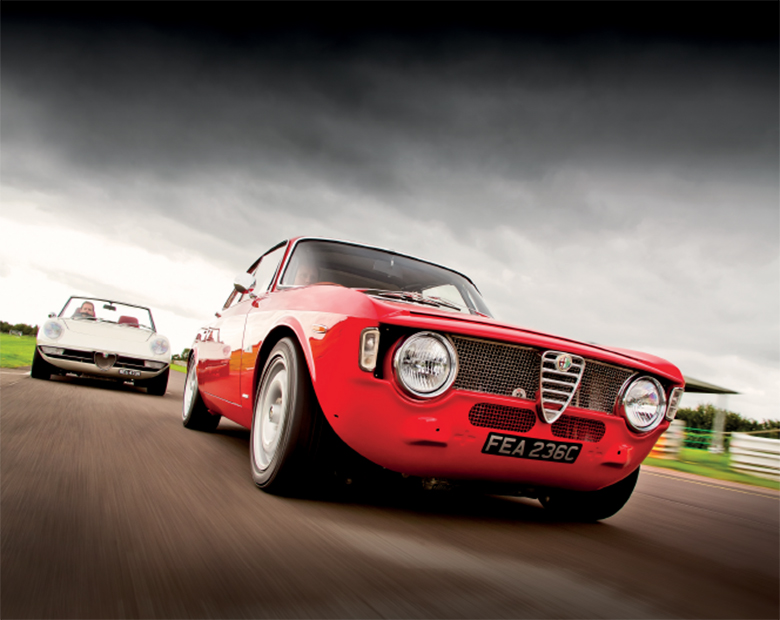
‘The idea was to try to keep the essence of it being a 50-year-old car in terms of the body shape – using original lights, et cetera – so that it looks like an original GTA,’ says Max. One thing that has been changed very slightly as far as the looks of the car are concerned is the wheels, but there are sound engineering reasons for this, as
The carbonfibre doors are so light that only a slam will do
Max explains: ‘to get better tyres, bigger brakes and better suspension geometry, we’ve recast the original, 14-inch diameter wheel in 15 inches. now we’ve got a 300mm brake disc with a six-pot caliper in the front and the extra inch also gives us better roll centres and caster. the rear axle’s tweaked camber and toe, to improve the grip and setup for the tyres, and then the top reaction arm, which originally is a cast-iron part, we redo in aluminium and then put a spherical bearing in the back of it to allow the axle to articulate nicely over the bumps. a lot of cars end up with heavy-duty rubber bushes to try to stop the axle from moving sideways, but this doesn’t allow the axle to articulate and you feel the back of the car bobbling around. We put a uniball in the back, which gives us no lateral movement at all but allows the axle to move vertically.’
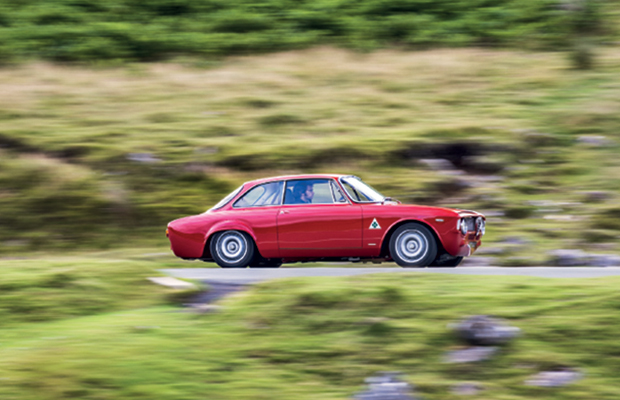
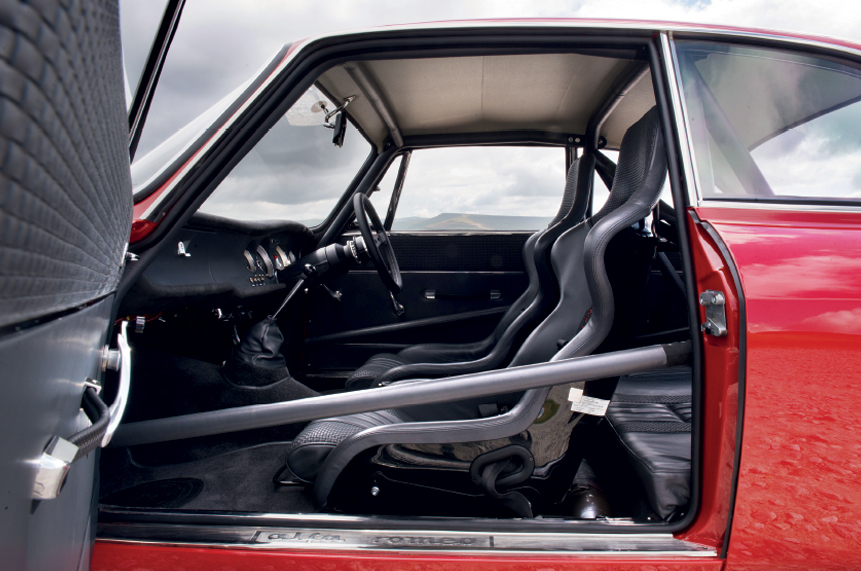
The limited-slip differential is a bespoke for item, too. ‘It’s our own diff, which we’ve developed with copper-sintered friction plates,’ says Max. ‘this has allowed us to reduce the total preload on the diff so it hasn’t got too high a preload and becomes too noisy. It’s running with our own specification of ramp angle and we actually run no ramp during deceleration, which is why you can brake and move the car left and right and place it where you want on the way into a corner. the diff isn’t trying to hold the car straight. this car is also running two-and-a-quarter-inch springs with coilover dampers at the back, which again massively reduces all the unsprung weight.’
The GTA-R begs to be dirven quickly and revved hard from the moment you get into it
And then there’s the engine. ‘Under the bonnet is an alfa 75-based twin spark unit,’ explains Max, ‘so it’s a proper alfa aluminium- block, four-cylinder engine. It’s the last of the line of the true alfa four-cylinder engines that goes back to the ’60s and is what these cars had originally. the head design is quite like the old autodelta [competition department’s] Gta cylinder head. We build it as a 215bhp 2 litre.’
As it developed the bits for Max’s car, alfaholics also sold them through its mail-order business. But with pictures of Max’s project being posted on the company’s website, people began asking if they could have a complete car like his GTA-R. that evolved into the business going full circle and having a workshop again, just like it had when richard started it. now the mail-order side and the workshop run in tandem. Most orders go abroad, with australia and america being the biggest markets. you can order all the parts for a GTA-R in a crate and the guys reckon they ship one full kit out every couple of weeks. about 30 to 40 cars also go through the workshop, near Bristol, each year, although alfaholics only does about two full builds in that time.
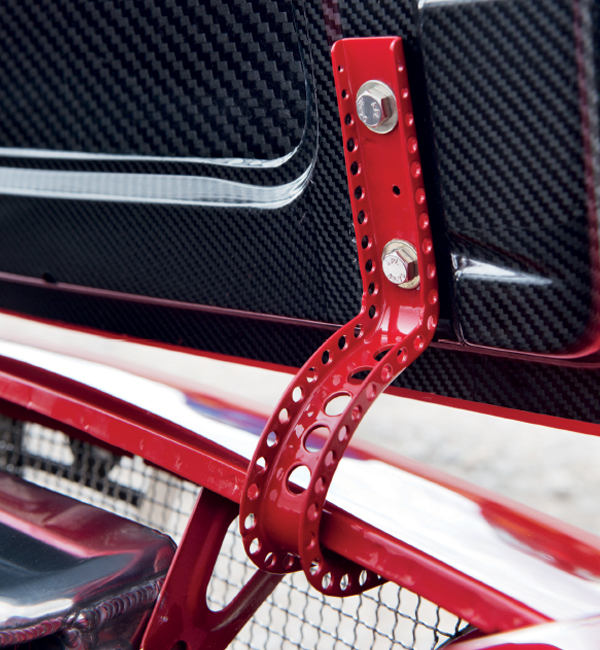
A fully built GTA-R costs – and I hope you’re sitting down for this – about £120,000. However, Max’s GTA-R has evolved a step further and for £198,000 alfaholics will now build you a car like the one you see here, which is even lighter and even more powerful, with custom parts that can’t be purchased separately. For starters there is a carbonfibre bootlid, bonnet and doors. the front wishbones are made from titanium, as are the wheel nuts and wheel bolts. everything that can be machined from billet aluminium has been and there are some parts that have more holes than a polo factory.
The end result is a kerb weight of 835kg – a reduction of 80kg over a ‘normal’ GTA-R – and that’s with the leather and Wilton wool carpet still in the car. this car is what they’re calling the ‘GTA-R 270’ (for 270bhp/ton), but there is also a 290 version coming with a 2.3-litre engine that has a long-stroke crank, a bigger bore and a special sort of closed-in deck to stiffen the block up. In theory that is a 240bhp engine, with a leap in torque from 160lb ft up to 200lb ft. the GTA-R 290 will set you back £222,000, which is a hell of a lot of money, but as the Banks brothers are at pains to explain, this represents the amount of time that goes into each one.
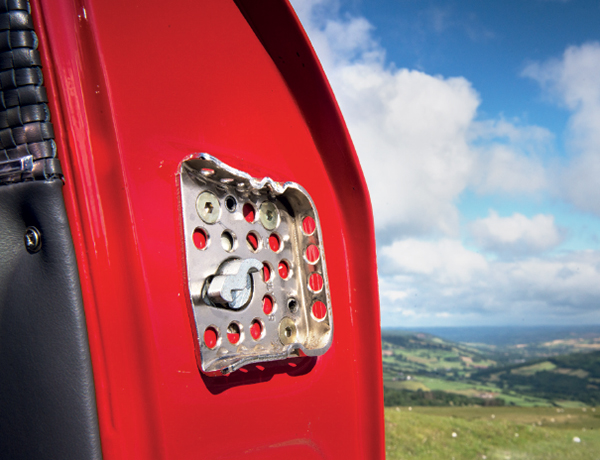
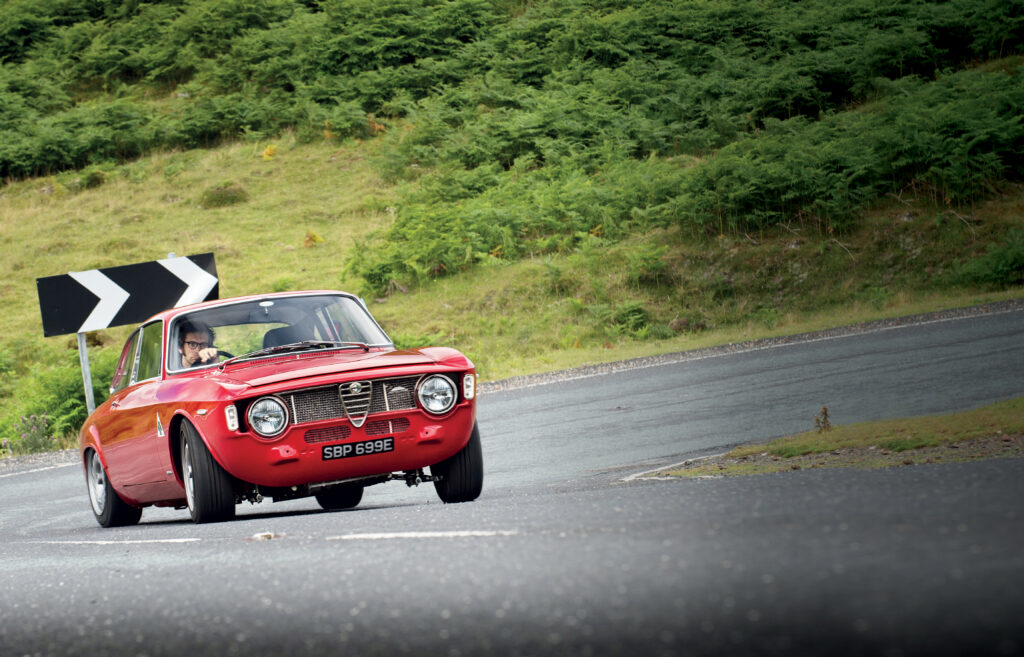
I have to say that, walking up to the car, I am already rather smitten. there is that slightly odd proportion to cars like this and the Ford escort that doesn’t look quite right from some angles, with the glasshouse appearing too long, but then the aesthetic is just perfect from others. the rear arches look cool but curiously unfinished compared to the rest of the car, but that’s how they were on the original Autodelta design. there is no need for me to write reams on the beautifully drilled parts as you can lust after them yourself through the photos. However, I will just mention that after you’ve pulled open the door with the teeny-tiny handle, you can’t help but notice that even the door closing plates have been holed like they’ve had close-quarters contact with the wrong end of an Uzi.
Inside, the car looks like new. But better. the leather covering the recaro buckets is woven in places to mimic that of the original seats, the carpet is thick and luxurious, and the pedals are machined from billet aluminium by the same company that does the dash in a Bugatti and the drinks cabinet in a rolls-royce. In fact, all the pieces such as the door handles and window winders have been machined from billet to save weight, before being polished so that you wouldn’t know they weren’t the chromed originals.
Although you cannot use them because of the lightweight (but leather covered) t45 cage that has been welded in, retaining the seats in the back is the final element that makes this feel like a very habitable car indeed.
If all this sounds a little too new, the smell of leather and wool mixed in with a faint whiff of petrol soon transports you back to a different age. the patina of the dials and switches combined with the Italian scripts declaring ‘GIrI x100’ on the Veglia rev-counter, or ventil, aperto, chiuso on the heater controls, also transports you to somewhere entirely more glamorous.
After a few minutes drinking it all in I pull the carbon door shut. then I have to open it again and shut it properly because it’s so light that only a slam will do. the engine starts easily on the key and the competition clutch and lightweight flywheel don’t combine as aggressively as I’d feared, so it’s easy to get moving. Manoeuvring at low speed is a doddle too, because the car has a speed-sensitive electric power-steering system that gives your forearms just enough assistance in a car park but then basically disappears once you’re up and running. this leaves you to enjoy one of the main reasons for buying one of these new-old cars: steering feel.
The weighting and tactility from the small wheel is everything we crave in modern cars but so rarely find. In fact, when you start to listen, it’s not just the wheel but the whole car that is talking. the seat is reclined a fraction and the pedals seem to lean forwards to meet your feet but it all feels perfect to me. changing gear is curious at first because you have this very precise, small action being controlled at a distance by a very long, slightly vague lever, yet it is quick and satisfying once you’re acclimatised.
There is a temptation to look at the little alfa and think it must be fragile and will need to be treated with kid gloves, but the GTA-R begs to be driven quickly and revved hard from the moment you get into it. Within a few minutes you’re reminded of just what a wonderful soundtrack a good naturally aspirated four-cylinder can provide. Gruff and rough, it has a terrifically hard bark that makes it sound fabulously aggressive. It’s fast too, with a bridge-to-gantry time around the nordschleife of close to eight minutes.
I was worried that the Yokohama Neova AD08 tyres might be too sticky and rob the flyweight alfa of some adjustability, but not a bit of it. through a particularly good sequence of bends it dances between direction changes, light on its feet. the suspension is relatively firm and down the bumpier stretches of Welsh blacktop you can still occasionally feel the vertical limits of the back axle, but this never seems to hamper progress. the advantage of the firm suspension setup is that there’s relatively little roll, so where you would expect a car of this vintage to lean and get vague, the alfa is perfectly supported on its two-way adjustable dampers. this means that it allows you to play with it accurately and confidently, revelling it he beautifully balanced handling, working both ends up to and then over their limits.
The combination of feedback, smells, sound, quality and the sheer playfulness of this car is something really magical. I can imagine driving one every day and enjoying it wherever I went, rarely wanting for anything more.
Alfaholics is a great name and whoever thought of it must have been chuffed to bits. But there is a sinister undertone. you only really discover this darker side once you’ve driven one of the company’s products, but it is very real. I speak from experience here, because after just one day’s exposure to this car I found myself craving more. In the days and weeks after I drove it I lost hours looking at old 105-series alfas on the internet – sometimes in the middle of the night. I kept replaying that glorious drive in my head, thinking about the sweet oversteer and longing for more, wondering where I could get some money to feed this desire. after a while I had to admit that after just one taste of an alfaholics product I might be addicted.
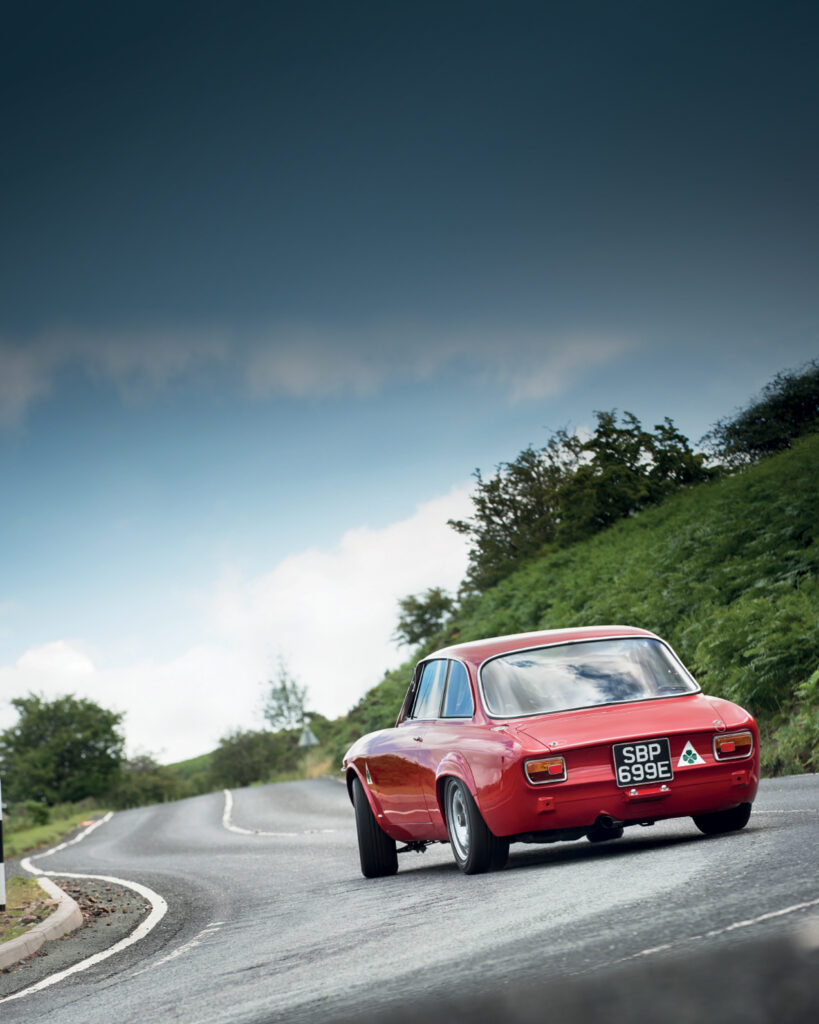
Alfaholics GTA-R 270
| Engine | In-line 4-cyl, 2 litres |
| Power | 222bhp @ 7000rpm |
| Torque | 160lb ft @ n/a rpm Transmission Five-speed manual, rear-wheel drive, limited-slip differential |
| Front Suspension | Double wishbones, coil springs, adjustable dampers, anti-roll bar |
| Rear Suspension | Live axle, coil springs, adjustable dampers |
| Brakes | Ventilated 300mm front discs, solid 267mm rear discs |
| Wheels | 7 x 15 in front and rear |
| Tyres | 195/55 R15 front and rear |
| Weight | 835kg |
| Power-to-weight | 270bhp / ton |
| 0-60mph | 4.6sec (claimed) |
| Top Speed | 148mph (claimed) |
